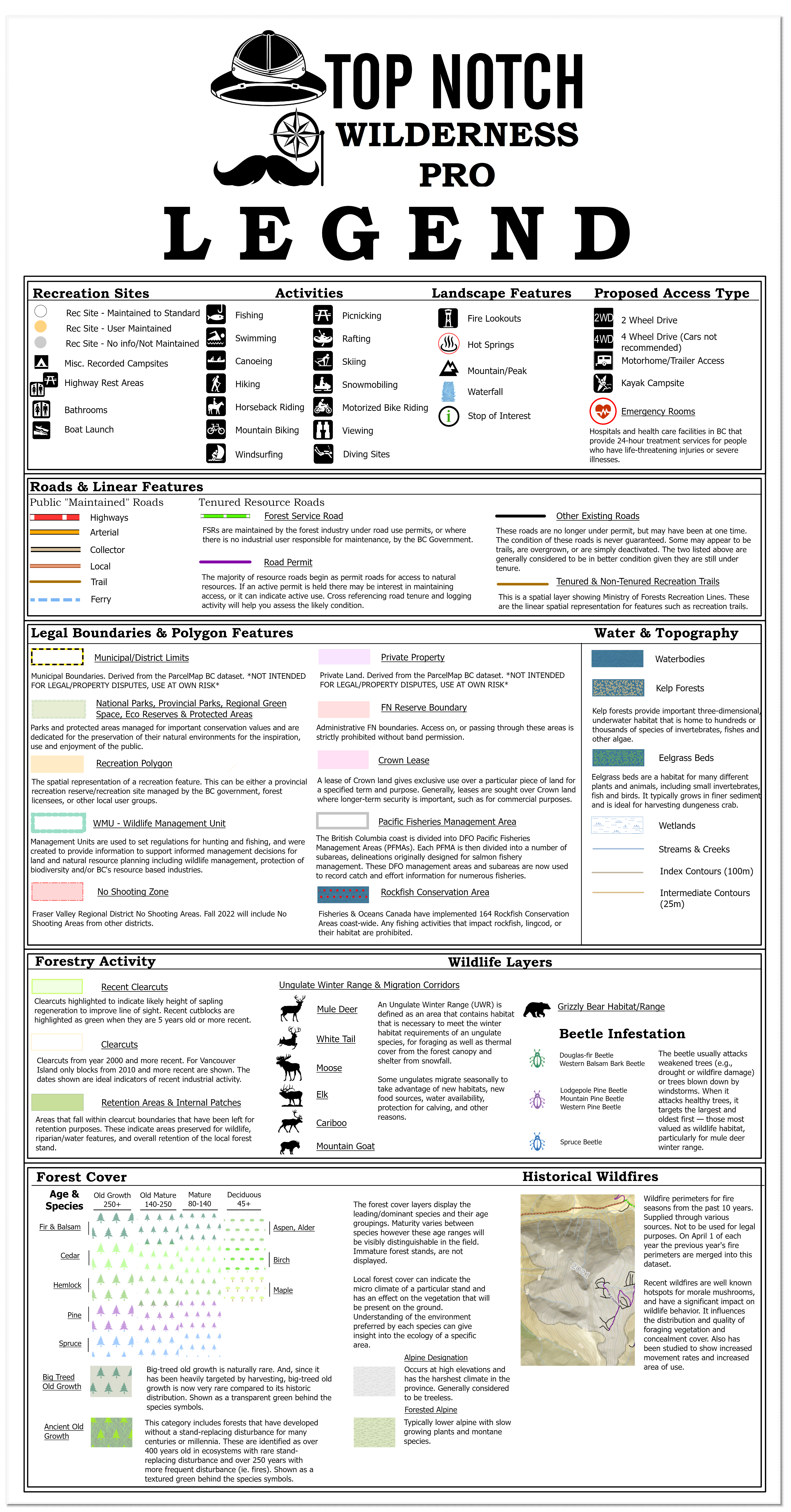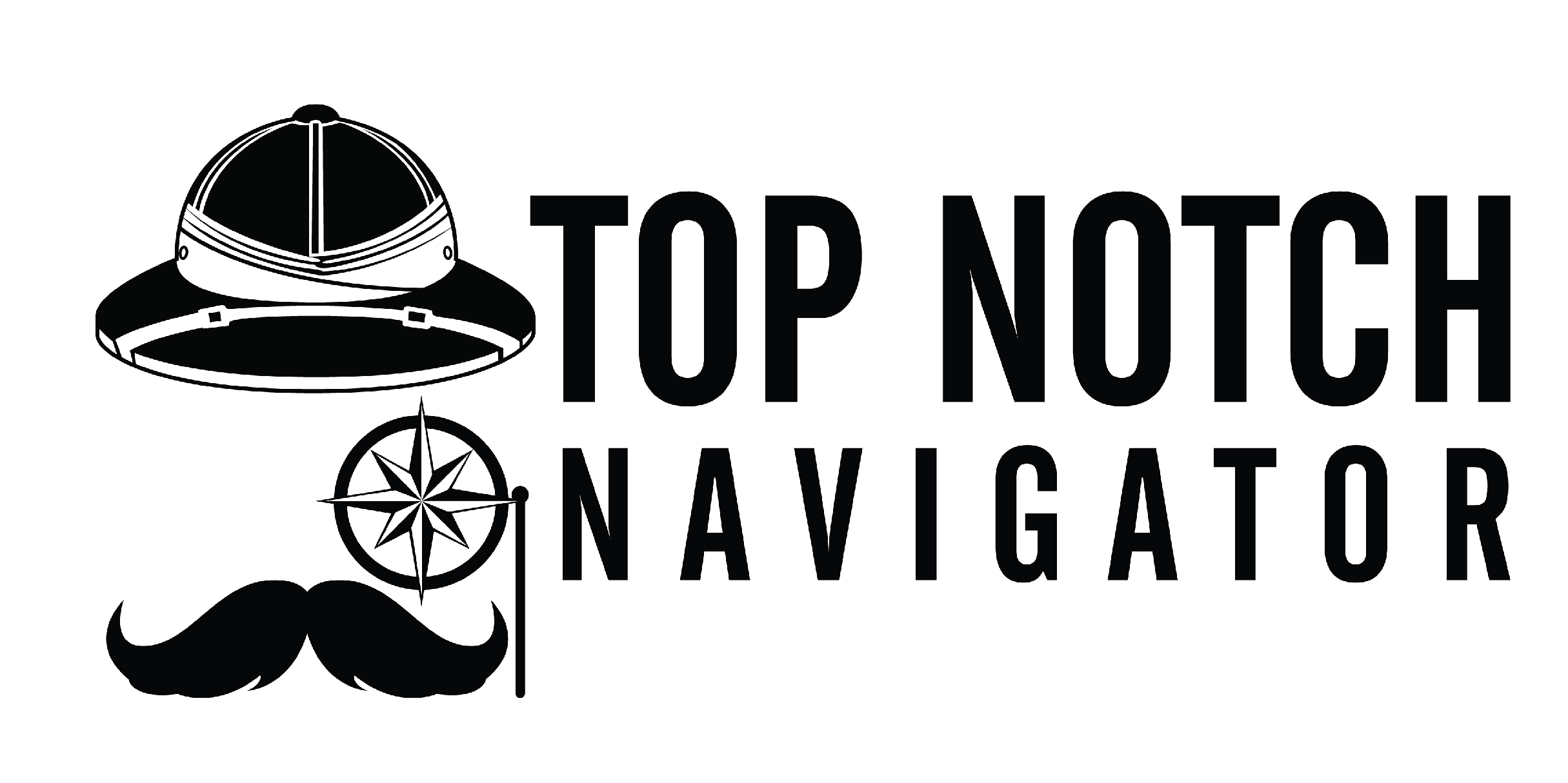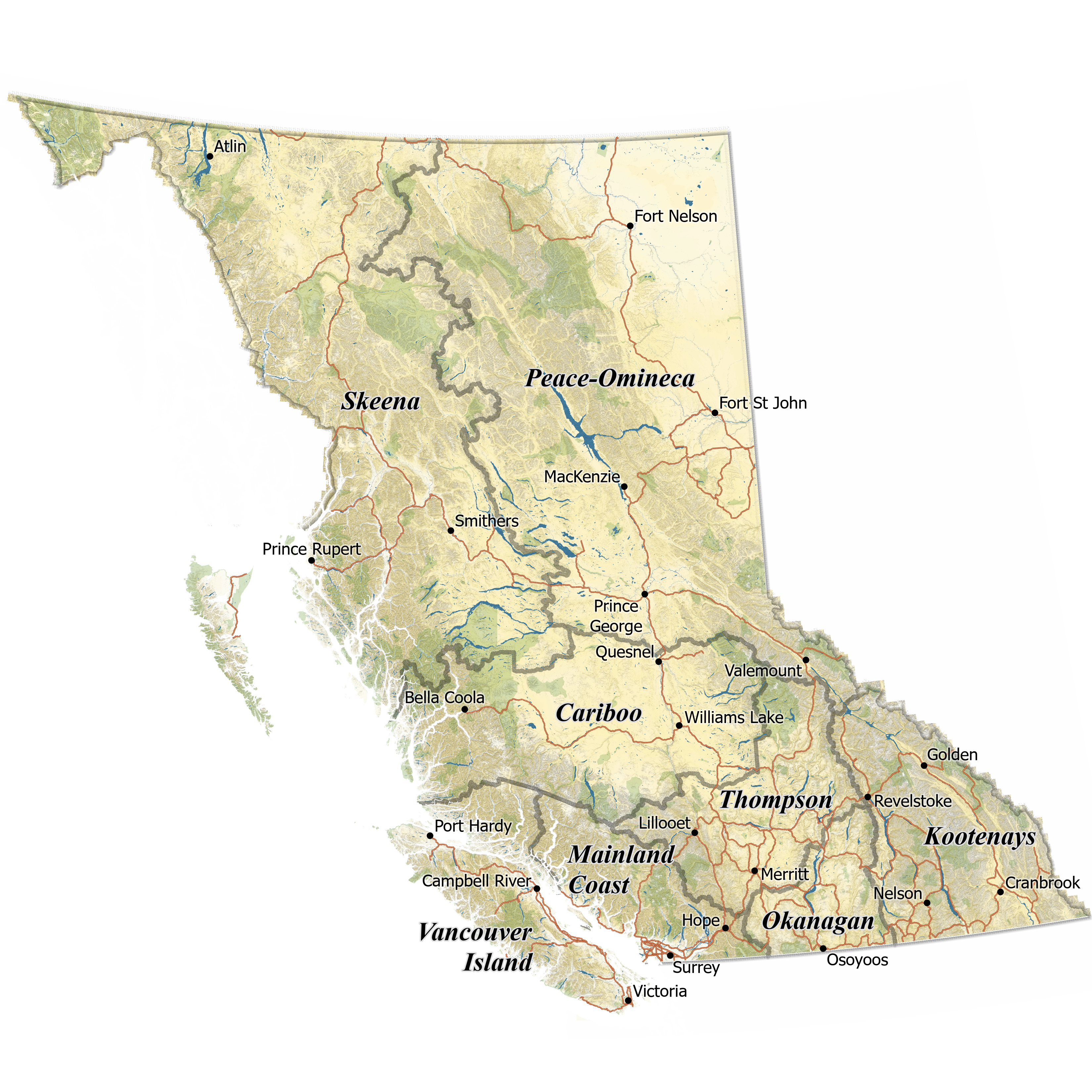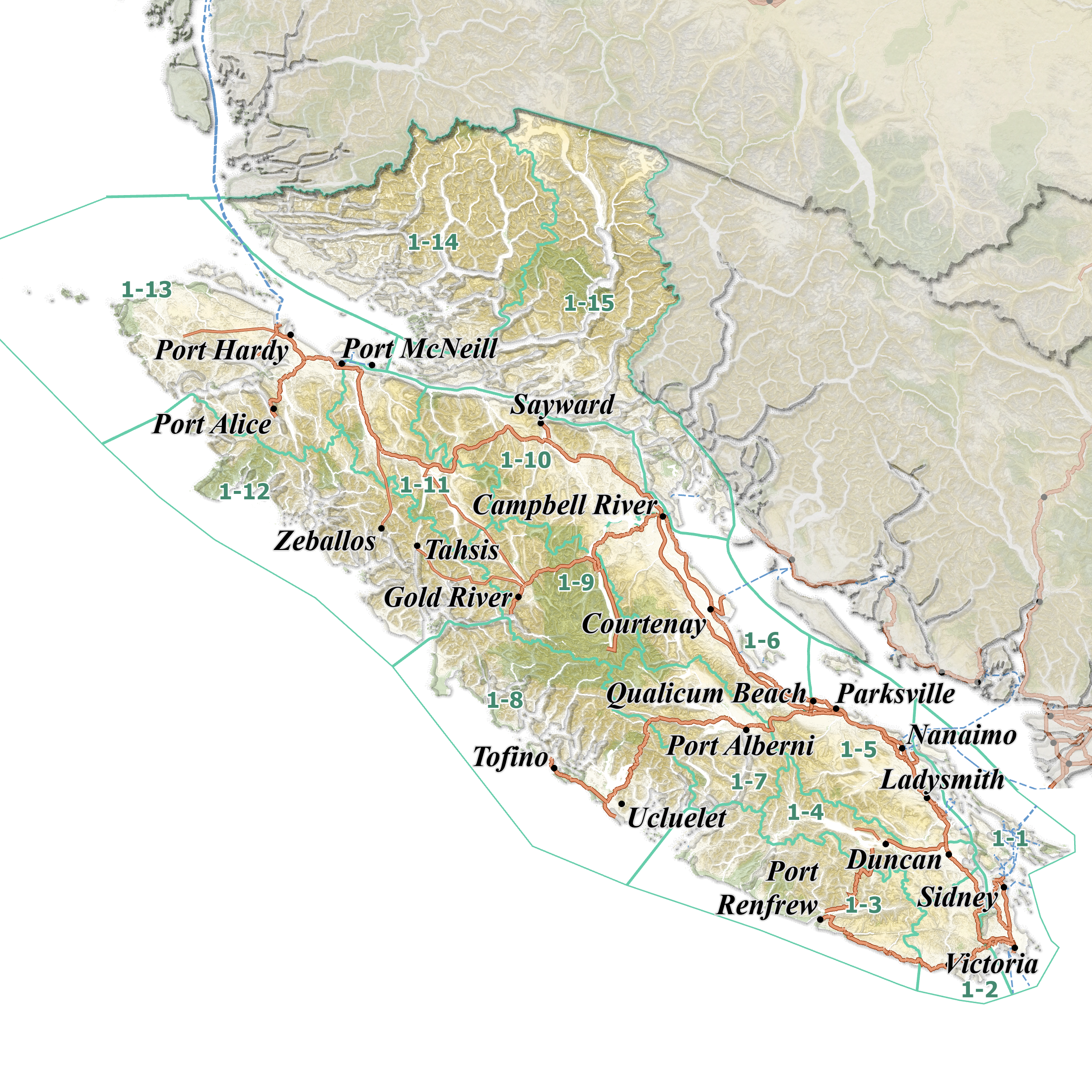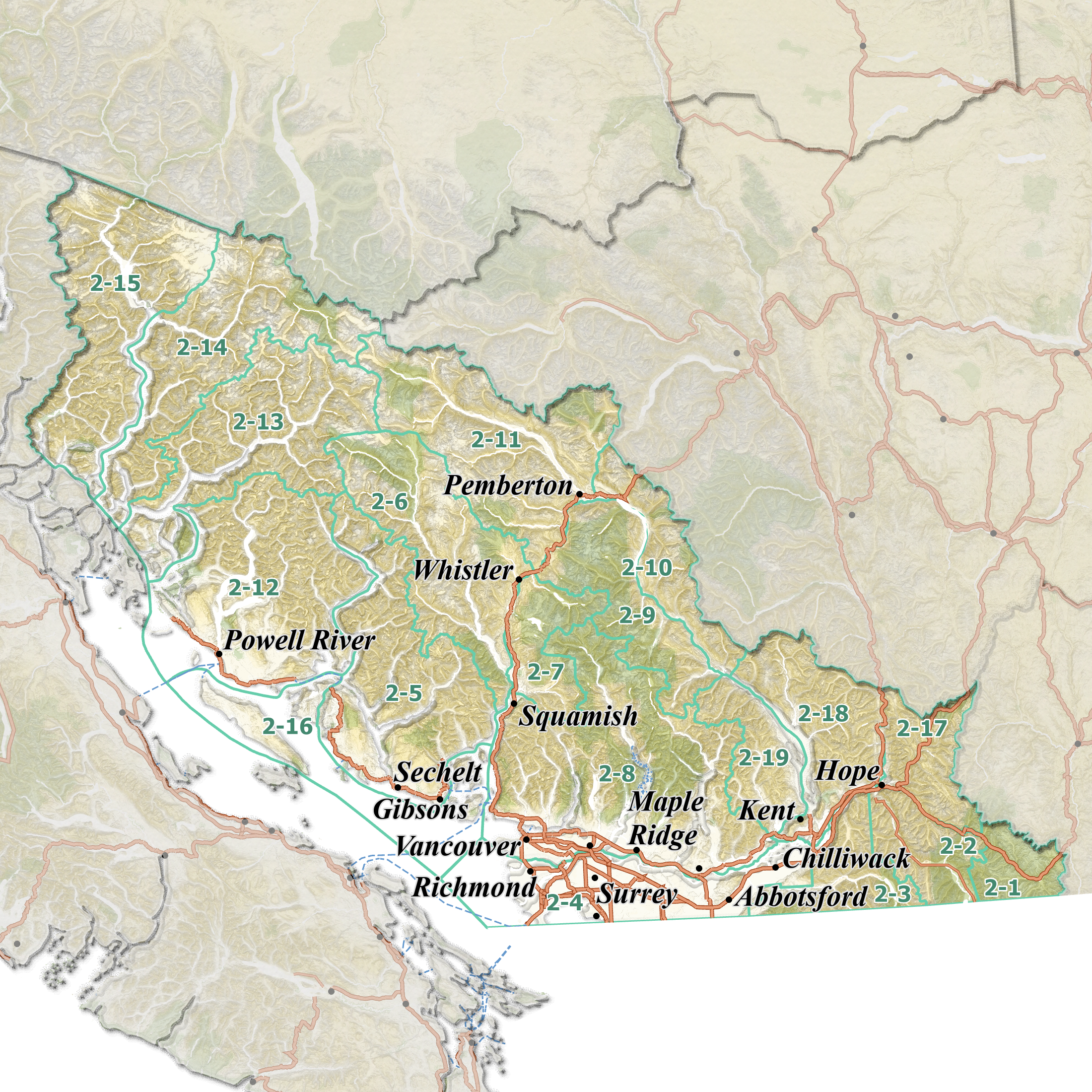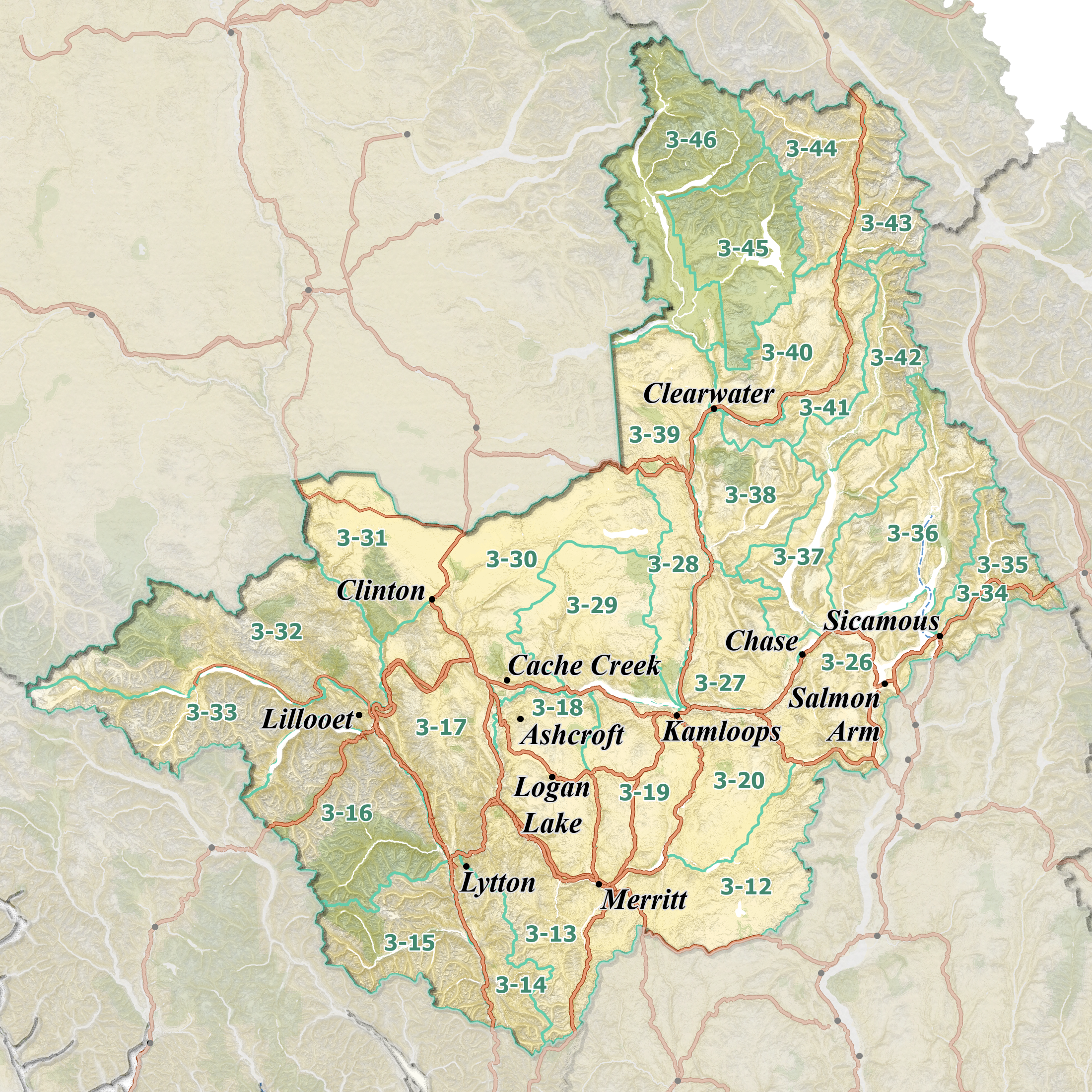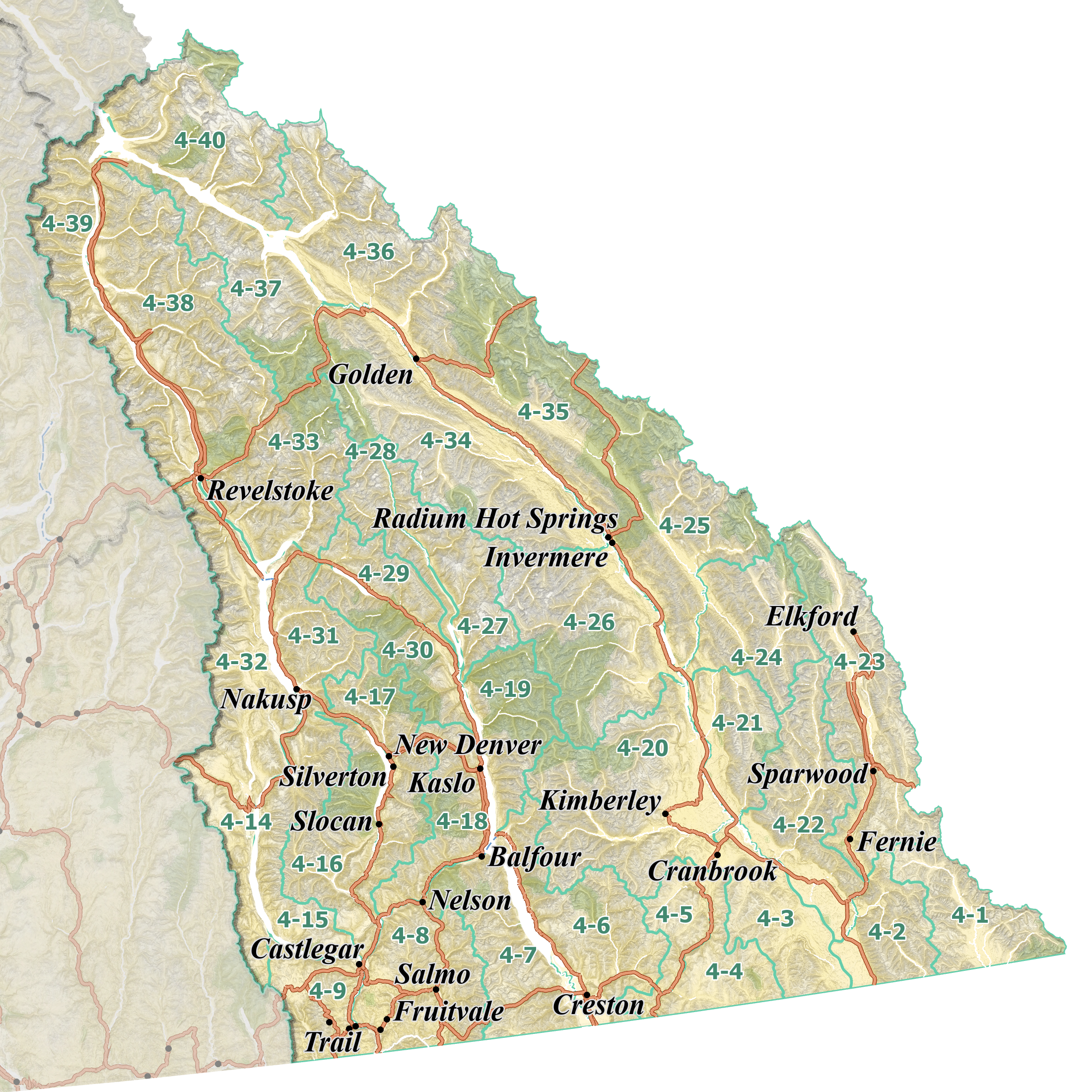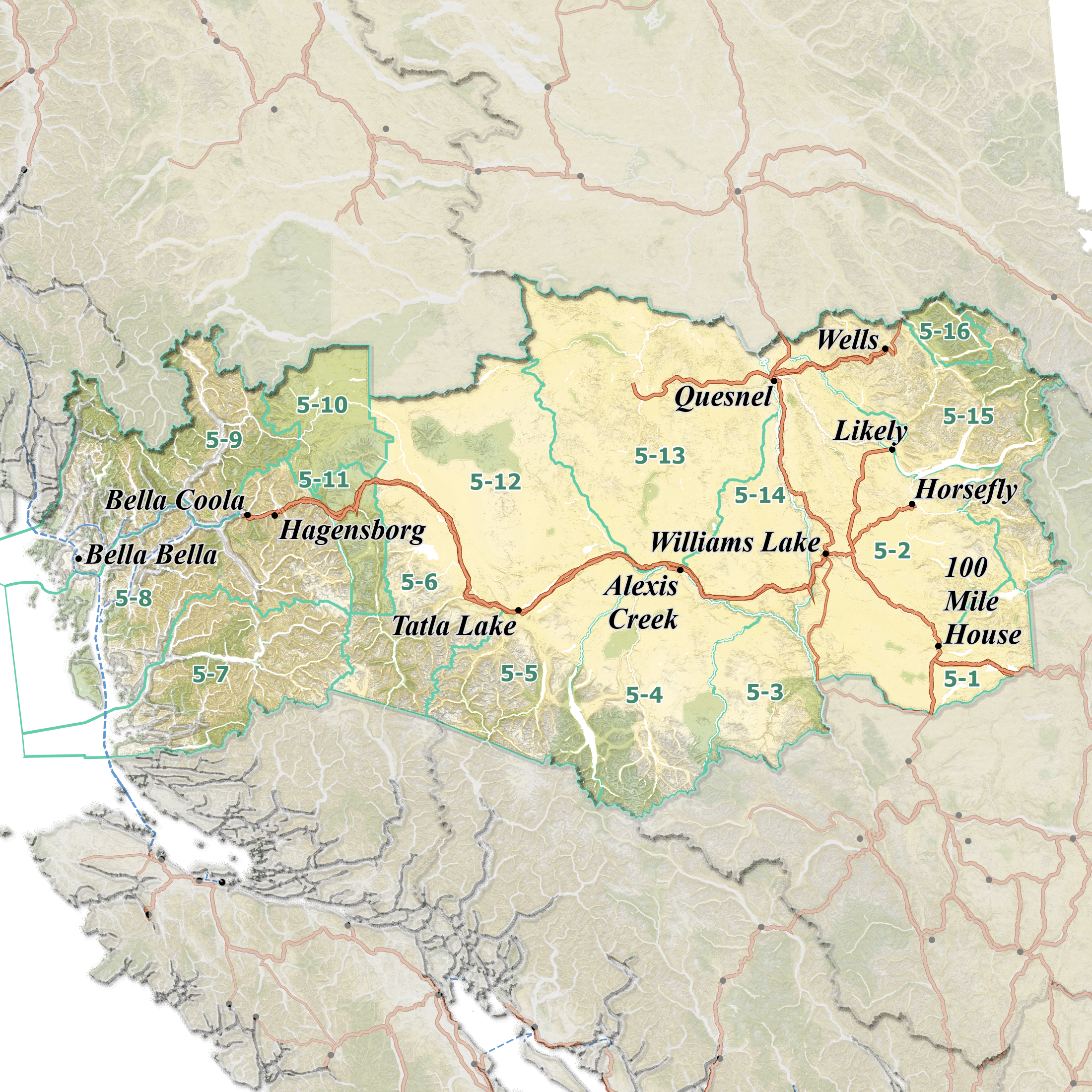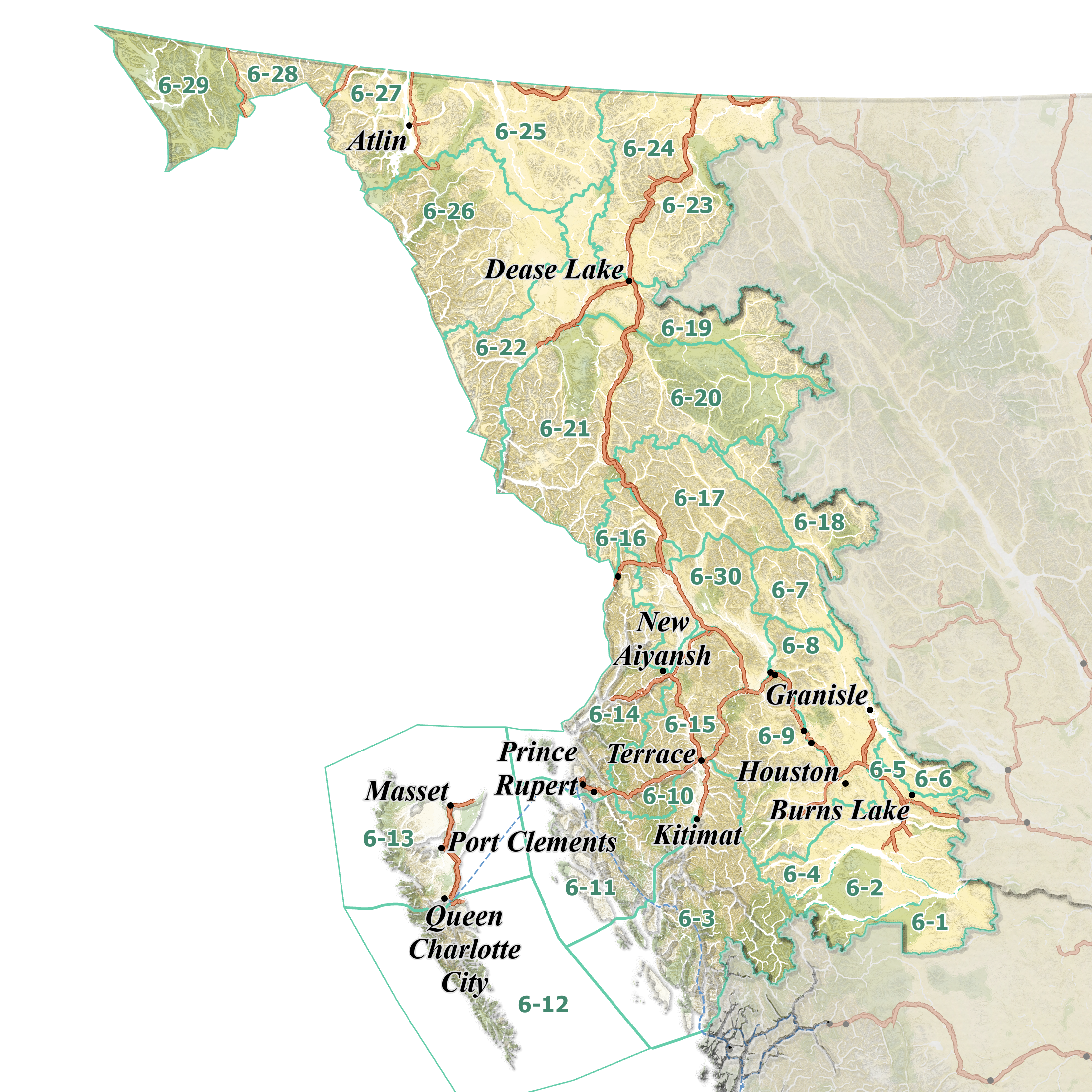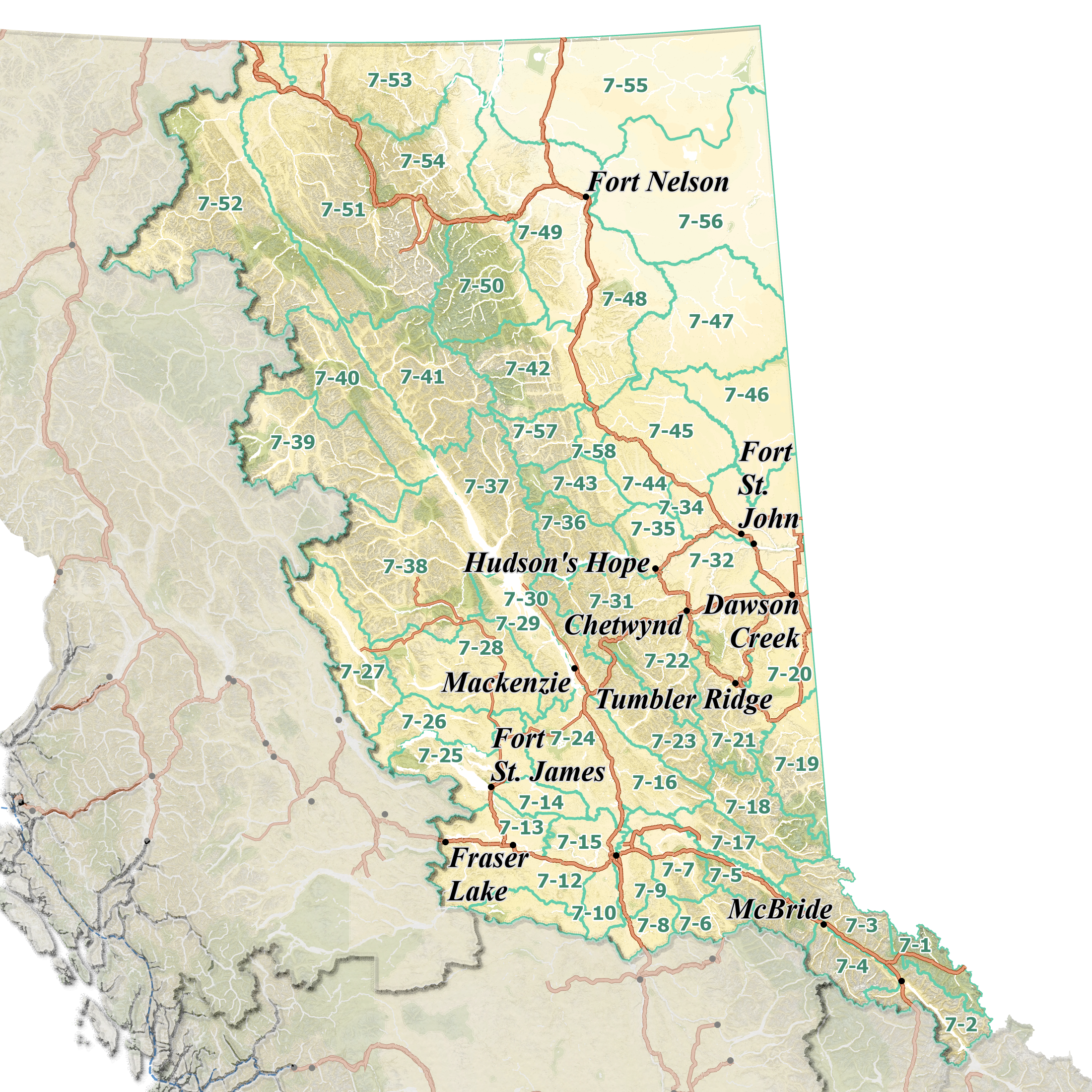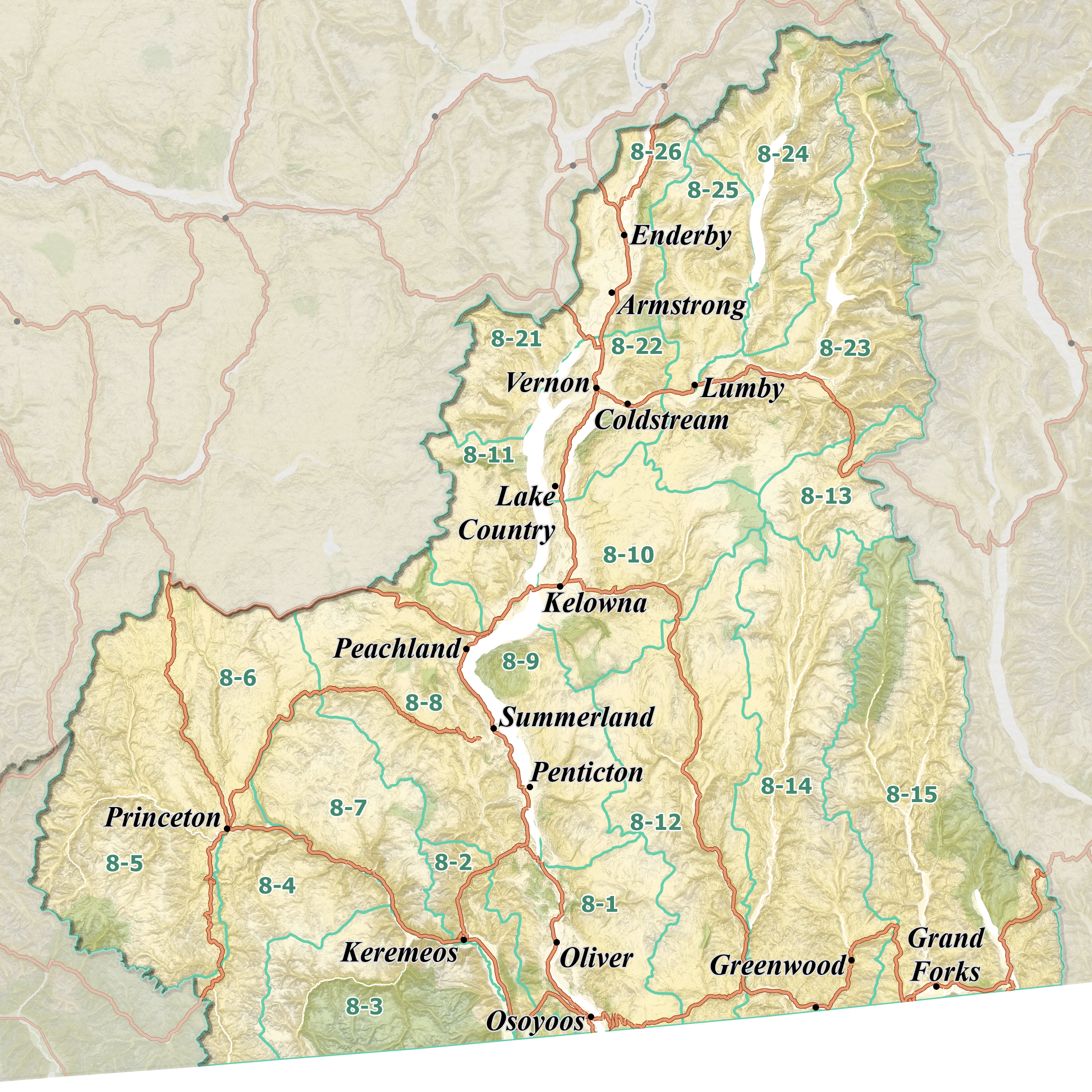Top Notch Navigator: Full BC Coverage

Product number:
WP100SQ
These topographic maps include a set of map layers custom tailored for off-roading and exploring in BC. Turnkey offline ready files that use GPS tracking on your phone or tablet via the popular apps Gaia GPS, Locus Maps, Backcountry Navigator, and many others.
These layers goes above and beyond the average recreation maps. This package has additional wildlife, forestry, and ecology layers. Top Notch Navigator maps are a one time purchase, no subscription. Users that buy the full province receive discounts for $15 updates to future versions of the maps, which occur every spring.
Click here to check out the demo video!
No cell service? No data? No problem. TNN maps are ready to go the second they are imported to your device. Here is a summary of the layers included:
BC Recreation Sites & Recreation Reserves
2898 Provincial BC Recreation sites & Recreation Reserves showing:
- Number of sites
- Vehicle access types
- Trailer & Cartop Boat launches
- Activities
- Maintained, user maintained, & non-maintained sites
TNN maps also show an additional 1,537 other marked campsites around the province.
Recreation Trails
(Hiking, Mountain Bike, ORV/ATV, Snowmobile)
Viewpoints
Take in the landscape with 1,720 marked viewpoints around the province.
Fire Lookout Towers
289 standing & decommissioned locations
Hot Springs
Locations of 123 hot springs throughout BC.
Waterfalls
Locations of 545 waterfalls throughout BC.
Stops of Interest
If you’ve travelled in B.C. or live close to a historic site, chances are that you have seen at least one of
these signs.
Highway Rest Stops
Spend less time on the shoulder when you need a break from those long road trips.
Coastal Kayak Campsites
Locations of 214 coastal kayak-in campsites and paddle routes.
Categorized Roads & Resource Roads
• Highways
• Public maintained roads
• Forest service roads
• Road permits
• Retired permits & resource roads
Legal Boundaries
• Crown land, private land, crown leases
• First nation boundaries
• Municipal Limits
• National/provincial parks, ecological reserves, conservancies, & protected areas
Big Treed Old Growth
Big-treed old growth is naturally rare. And, since it has been heavily targeted by harvesting, big-treed old growth is now very rare compared to its historic distribution.
Ancient Old Growth
This category includes forests that have developed without a stand-replacing disturbance for many centuries or millennia. These are identified as over 400 years old in ecosystems with rare stand-replacing disturbance and over 250 years with more frequent disturbance (ie. fires).
Historical Forest Fires
Wildfire perimeters for fire seasons from the past 10 years. Recent wildfires are well known
hotspots for morel mushrooms, and have a significant impact on wildlife behavior.
Forestry Data
• Clear cuts labelled with the dates they were logged.
Wilderness Pro goes above and beyond the average recreation maps. This package has all the same features as the Offroading maps, but with additional wildlife, forestry, and ecology layers. Top Notch Navigator maps are a one time purchase, no subscription. Users that buy the full province receive discounts for $15 updates to future versions of the maps, which occur every spring.
Click here to check out the demo video!
This package is made for hunters, foragers, nature photographers, and field naturalists. If you are looking to do extra analysis or e-scouting, Wilderness Pro stands alone. Here is a summary of the additional layers included:
WMU - Wildlife Management Units
Used to set regulations for hunting and fishing, as well as provide information to support land & resource management decisions.
Legal Boundaries
• Crown land, private land, crown leases
• First nation boundaries
• Municipal Limits
• National/provincial parks, ecological reserves, conservancies, & protected areas
No Shooting Zones
No Shooting Zones from the BC Hunting Synopsis as well as the No Shooting Areas of the Fraser Valley Regional District
Forestry Activity
Recent Cutblocks: Recent cutblocks are highlighted when they are 5 years old or more recent to indicate likely height of sapling regeneration to improve line of sight. This is also a good indicator of road maintenance activity.
Retention Areas & Internal Patches: Areas that fall within cutblock boundaries that have been left for retention purposes. These indicate areas preserved for wildlife, riparian/water features, and overall retention of the local forest stand.
Mature Forest Cover
Wilderness Pro is the only BC wide map provider that includes forest cover. The forest cover layers display the leading/dominant species and their age groupings. Maturity, of course, varies between species however these age ranges will be visibly distinguishable in the field. Immature forest stands, are not displayed.
Local forest cover can indicate the micro climate of a particular stand and has an effect on the vegetation that will be present on the ground. Understanding of the environment preferred by each species can give insight into the ecology of a specific area.
Local forest cover can indicate the micro climate of a particular stand and has an effect on the vegetation that will be present on the ground. Understanding of the environment preferred by each species can give insight into the ecology of a specific area.
Big Treed Old Growth
Big-treed old growth is naturally rare. And, since it has been heavily targeted by harvesting, big-treed old growth is now very rare compared to its historic distribution.
Ancient Old Growth
This category includes forests that have developed without a stand-replacing disturbance for many centuries or millennia. These are identified as over 400 years old in ecosystems with rare stand-replacing disturbance and over 250 years with more frequent disturbance (ie. fires).
Historical Forest Fires
Wildfire perimeters for fire seasons from the past 10 years. Recent wildfires are well known
hotspots for morel mushrooms, and have a significant impact on wildlife behavior.
Ungulate Winter Range & Migration Corridors
An Ungulate Winter Range (UWR) is defined as an area that contains habitat that is necessary to meet the winter habitat requirements of an ungulate species, for foraging as well as thermal cover from the forest canopy and shelter from snowfall. Some ungulates migrate seasonally to take advantage of new habitats, new food sources, water availability, protection for calving, and other reasons.
Grizzly Bear Habitat/Range
Grizzly habitat and range is included from multiple sources to reflect the known coastal habitats and interior ranges.
Alpine Designation
Occurs at high elevations and has the harshest climate in the province. Generally considered to be treeless.
Beetle Infestation
Douglas-Fir Beetle
Western Balsam Bark Beetle
Lodgepole/Mountain/Western Pine Beetle
Spruce Beetle
Tidal Fishing Management Areas
The British Columbia coast is divided into DFO Pacific Fisheries Management Areas (PFMAs). Each PFMA is then divided into a number of subareas, delineations originally designed for salmon fishery management. These DFO management areas and subareas are now used to record catch and effort information for numerous fisheries, including shellfish.
Rockfish Conservation Areas
Fisheries & Oceans Canada have implemented 164 Rockfish Conservation Areas coast-wide. Any fishing activities that impact rockfish, lingcod, or their habitat are prohibited.
Kelp Forests
Kelp forests provide important three-dimensional, underwater habitat that is home to hundreds or thousands of species of invertebrates, fishes and other algae.
Eelgrass Beds
Eelgrass beds are a habitat for many different plants and animals, including small invertebrates, fish and birds. It typically grows in finer sediment and is ideal for harvesting dungeness crab.
